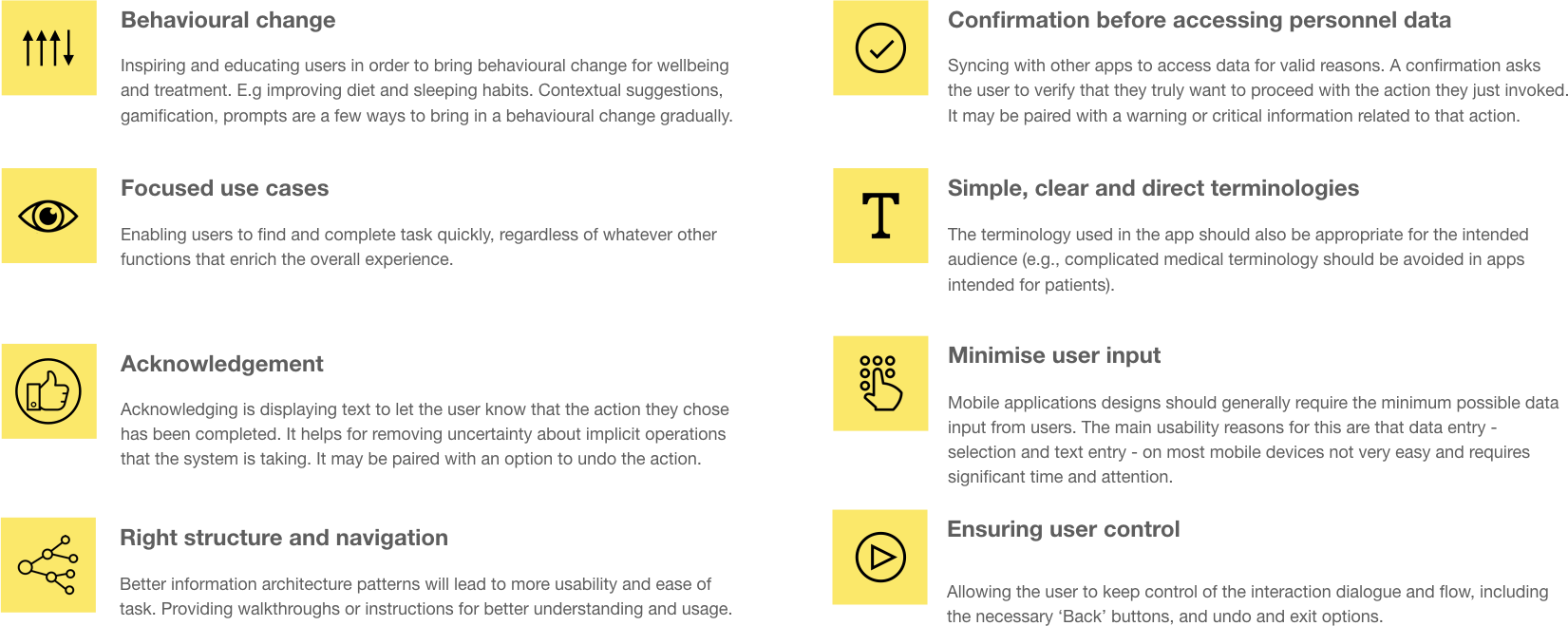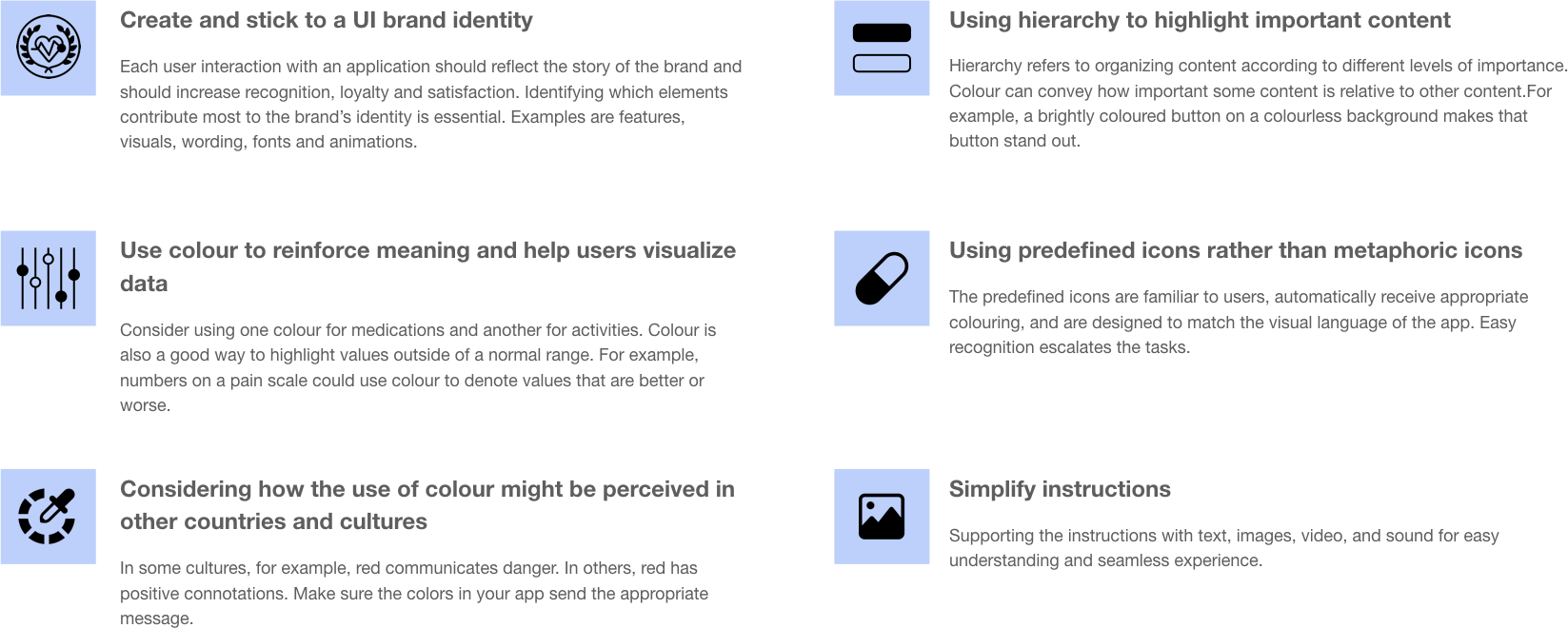DATA DRIVEN HEALTHCARE
This study talks about data driven products and its use in the healthcare sector, the patterns of interaction and visual language followed in mHealth apps and a few design recommendations based on the study.
Keywords: need, data driven products, design, user satisfaction, user experience, healthcare.
What are data driven products?
“Need” is the mother of all inventions. The invention of data driven products was also a need that came into picture when service, consumer and supplier chain were having a hard time being largely field driven. Service providers were spending millions to reach consumers and consumers feeling burnt of cost (money and time both at stake). Consumers always need a quick, hassle free and cost effective service be it in any sector- lifestyle, healthcare, tourism, education, communication, entertainment, transportation, banking or IT and many more.
Image Source: Shutterstock.com
Data driven means that information must be consumable and contextual, to encourage action that will modify behaviour over time and design has a direct correlation to user adoption, time to complete a task, reduction in errors, a decrease in support calls, and an overall increase in user satisfaction. So, the keys to great data driven product design include iteration and collecting user feedback throughout the whole cycle, not just at the end.
How a designer fits in this product domain and the challenges they face?
In a data driven product domain a designer first analyses the existing customers, their expectations and behaviours in order to set focus groups or ideal customers. Then based on their analysis and assumptions a proposal is made which then needs to be tested and re iterated using stakeholder and end user feedback.
During this design and development process the biggest challenge faced by the designers is the - The degree to which design processes are connected and integrated with other corporate processes that enable individuals to work together to create the user experience of the product.
Image Source: https://dribbble.com
Context
The application of data driven products in healthcare has a great potential to promote healthy lifestyles, improve healthcare provider decision-making, and empower patients by improving access to medical and health information.
The healthcare mobile app development industry is one of the fastest growing today and it is estimated to reach $102.43 billion by 2022.
This study tries to give an overview of the data driven healthcare, its evolution and a futuristic proposal of a data driven product in healthcare domain.
Domain study
The healthcare domain in context with data driven products.
Stakeholders involved
Identifying the the stakeholders in the healthcare sector to understand the data transfer and management in the healthcare sector.
Technology trends
Data driven technology trends in healthcare sector which has the potential of being most influential and has a possibility of high adoption are EHR, Telehealth, mHealth and Genomic medicine.
Trend mapping
Mapping the trends over a given period of time helps in understanding the evolution of data driven healthcare sector.
The mHealth field has emerged as a sub-segment of eHealth. Mobile applications and services can include, among other things, remote patient monitors, video conferencing, online consultations, personal healthcare devices, wireless access to patient records and prescriptions. Since mHealth is the largely adopted and easily available service in healthcare, the study narrows down to this segment. Such apps as are distinctively categorised according to the purpose they serve.
mHealth App Categorization
User engagement
Since people are different; they have different receptivity and responsiveness to tools for, say, education, versus tools for behaviour change, or communication, or social support. So, these apps have various levels of engagement with healthcare and this depend on how they address the needs of the people using them.
Interaction Patterns
mHealth app designs follow well defined interaction patterns for better effectiveness, efficiency and satisfaction with which specific users can achieve a specific set of tasks in a particular environment.
Visual language
Visual design language facilitates the effectiveness of the mHealth apps and helps in easy delivery of information and task completion.
Future trends in healthcare
Design Principles
Based on the above observations, this study proposes the below listed design considerations that can help researchers and developers to create more usable applications as well as providing beneficial information for anyone interested in the implementation and assessment of mHealth applications.
Conclusion
There is good reason to be excited over mHealth. Mobile technology can enable much-needed, thoroughgoing change in healthcare systems worldwide and in turn bring significant social and economic benefits. Yet, mHealth is still a work in progress and is growing and changing along with healthcare needs. The mHealth marketplace has lived up to its hype, but where it goes next depends on our changing healthcare needs. While fitness applications are hot now, the future for mHealth applications lies in remote monitoring and consultation.Mobile technology can enable much-needed, thoroughgoing change in healthcare systems worldwide and in turn bring significant social and economic benefits. Yet, mHealth is still a work in progress and is growing and changing along with healthcare needs. The mHealth marketplace has lived up to its hype, but where it goes next depends on our changing healthcare needs. While fitness applications are hot now, the future for mHealth applications lies in remote monitoring and consultation.




![[24]7 design test.001.png](https://images.squarespace-cdn.com/content/v1/5944ad3eb11be1e4f4078a1a/1505815365197-RCPM2J9GZ92YEWGJSAWM/%5B24%5D7+design+test.001.png)


![[24]7 design test.001.png](https://images.squarespace-cdn.com/content/v1/5944ad3eb11be1e4f4078a1a/1505820283725-64DOA61R3HTDUA5N6J7R/%5B24%5D7+design+test.001.png)




